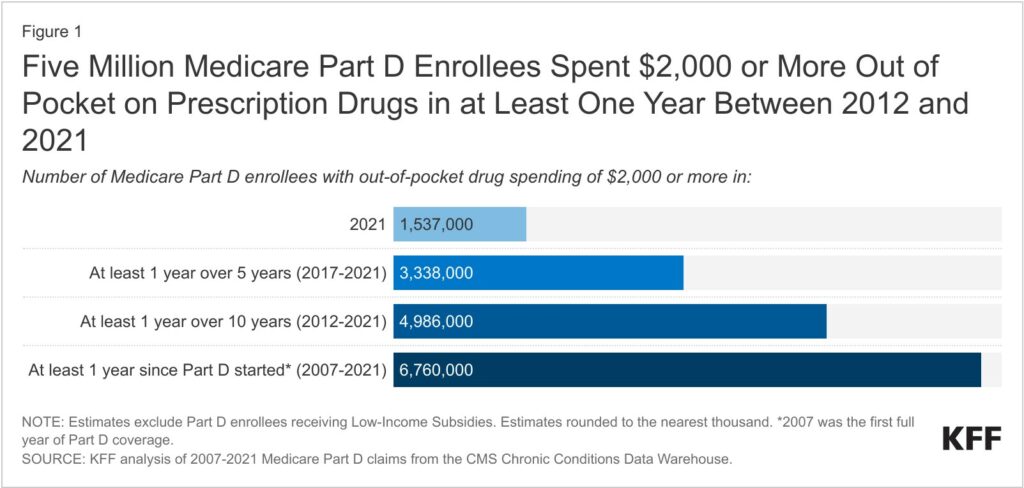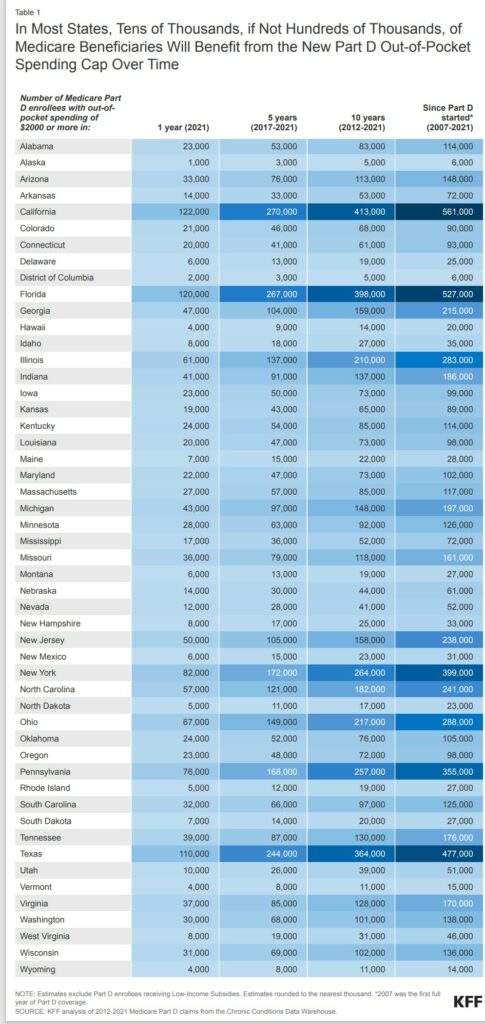The Elderly President’s Medicare Part D program Saves Money for Seniors and the Government
Continuing the ongoing implementation of President Biden’s prescription drug pricing law called the Inflation Reduction Act of 2022. The Centers for Medicare & Medicaid Services (CMS) released the final part one guidance for the new Medicare Prescription Payment Plan. Today’s guidance helps ensure that Medicare Part D plan sponsors can successfully implement the Medicare Prescription Payment Plan and effectively build the necessary infrastructure to provide a seamless experience for people enrolled in a Medicare Part D prescription drug plan who elect to participate in this program.
I am sure if the Democratic candidate looses to trump in 2024, newly minted Pres Trump will keep the program just like he did with Obama’s programs. Not . . .
The drug law is already helping reduce the burden of high upfront out-of-pocket prescription drug costs for seniors and people with disabilities with Medicare, including by capping out-of-pocket costs for a month’s supply of each covered insulin product at $35 under Medicare, and making Advisory Committee on Immunization Practices (ACIP)-recommended vaccines available at no cost for people with Medicare prescription drug coverage. The Medicare Prescription Payment Plan, which begins in 2025, will give people with Medicare prescription drug coverage (Medicare Part D) the option to pay out-of-pocket costs in monthly payments spread out over the year rather than requiring they pay in full at the pharmacy counter each time they fill a prescription.
Health and Human Services Secretary Xavier Becerra . . .
“No one should have to choose between paying for medicine or putting food on the table. Thanks to President Biden’s lower cost prescription drug law, the Inflation Reduction Act, fewer seniors and people with disabilities are making this difficult decision. For people who get their prescriptions through Medicare Part D and face high costs early in the year, we are easing the burden by allowing payments to be spread out over time. HHS will continue tackling high health care costs on all fronts so that every American can benefit from access to life-saving medicines.”
CMS Administrator Chiquita Brooks-LaSure . . .
“The guidance released today is an important step in helping certain people with Medicare prescription drug coverage who have high upfront drug costs to spread out their cost sharing over the year CMS remains committed to implementing the historic Inflation Reduction Act in order to help people with Medicare lower costs and access the prescriptions they need.”
- As of January 1, 2024, people enrolled in Medicare Part D who have very high drug costs will, for the first time, no longer have to pay cost sharing for their prescription drugs in the catastrophic phase of the program.
- Starting in 2025, all individuals with Medicare Part D will have their out-of-pocket prescription drug costs capped at $2,000.
- On January 1, 2024, the law also expanded eligibility for full benefits under the Low-Income Subsidy program (LIS or “Extra Help”) under Medicare Part D. Nearly 300,000 people with low and modest incomes currently enrolled in LIS are now benefiting from the program’s expansion including lowering drug costs such as no deductible, no premiums, and fixed, lowered copayments for certain medications. An additional 3 million people could benefit from the Extra Help program now who are not currently enrolled.
- The law also ensures people with Medicare Part D and people with Part B who receive insulin delivered through a pump pay no more than $35 for a month’s supply of each covered insulin product.
- It also provides coverage without patient cost sharing of recommended vaccines for people who have Medicare Part D.
For the fact sheet on the final part one guidance for the Medicare Prescription Payment Plan, please visit: Fact Sheet: Medicare Prescription Payment Plan Final Part One Guidance (cms.gov)
Some States May Save More Than Other States
In most states, tens of thousands, if not hundreds of thousands, of Medicare beneficiaries will feel relief from the new Part D out-of-pocket spending cap (Table 1). In California, Florida, and Texas, more than 100,000 Part D enrollees faced out-of-pocket costs of $2,000 or more in 2021, and in another 6 states (New York, Pennsylvania, Ohio, Illinois, North Carolina, and New Jersey), between 50,000 and 82,000 did so.
As at the national level, more Part D enrollees in each state will benefit over time. For example, in Iowa, Louisiana, and Maryland, 73,000 Part D enrollees faced out-of-pocket costs of $2,000 or more in at least one year between 2012 and 2021. In Michigan, New Jersey, and Georgia, 148,000, 158,000, and 159,000 Part D enrollees, respectively, spent $2,000 or more in at least one year over this same 10-year period. In Texas, 364,000 Part D enrollees did so; in Florida and California, around 400,000 enrollees or more.
Capping out-of-pocket spending will help Part D enrollees with relatively high drug costs. This may include only a relatively small number of Part D enrollees in any given year. As this analysis shows a larger number over time. People who will be helped include those who have persistently high drug costs over multiple years and others who have high costs in one year but not over time.
While a cap on out-of-pocket costs will help millions of Part D enrollees over time, higher plan costs to provide the Part D benefit could also mean higher plan premiums, a dynamic that the Inflation Reduction Act’s premium stabilization provision was designed to mitigate. Although KFF polling shows that a relatively small share of older adults is aware of the Inflation Reduction Act’s $2,000 cap on out-of-pocket drug costs for Part D enrollees that takes effect in 2025, millions of them will benefit from this cap in the years to come.
Click on image at least once to enlarge and a second time if needed.
Explaining the Prescription Drug Provisions in the Inflation Reduction Act, KFF
Fact Sheet: Medicare Prescription Payment Plan Final Part One Guidance, cms.gov
Biden-Harris Administration Issues Final Guidance to Help People with Medicare Prescription Drug Coverage Manage Prescription Drug Costs, CMS
Millions of People with Medicare Will Benefit from the New Out-of-Pocket Drug Spending Cap Over Time, KFF


